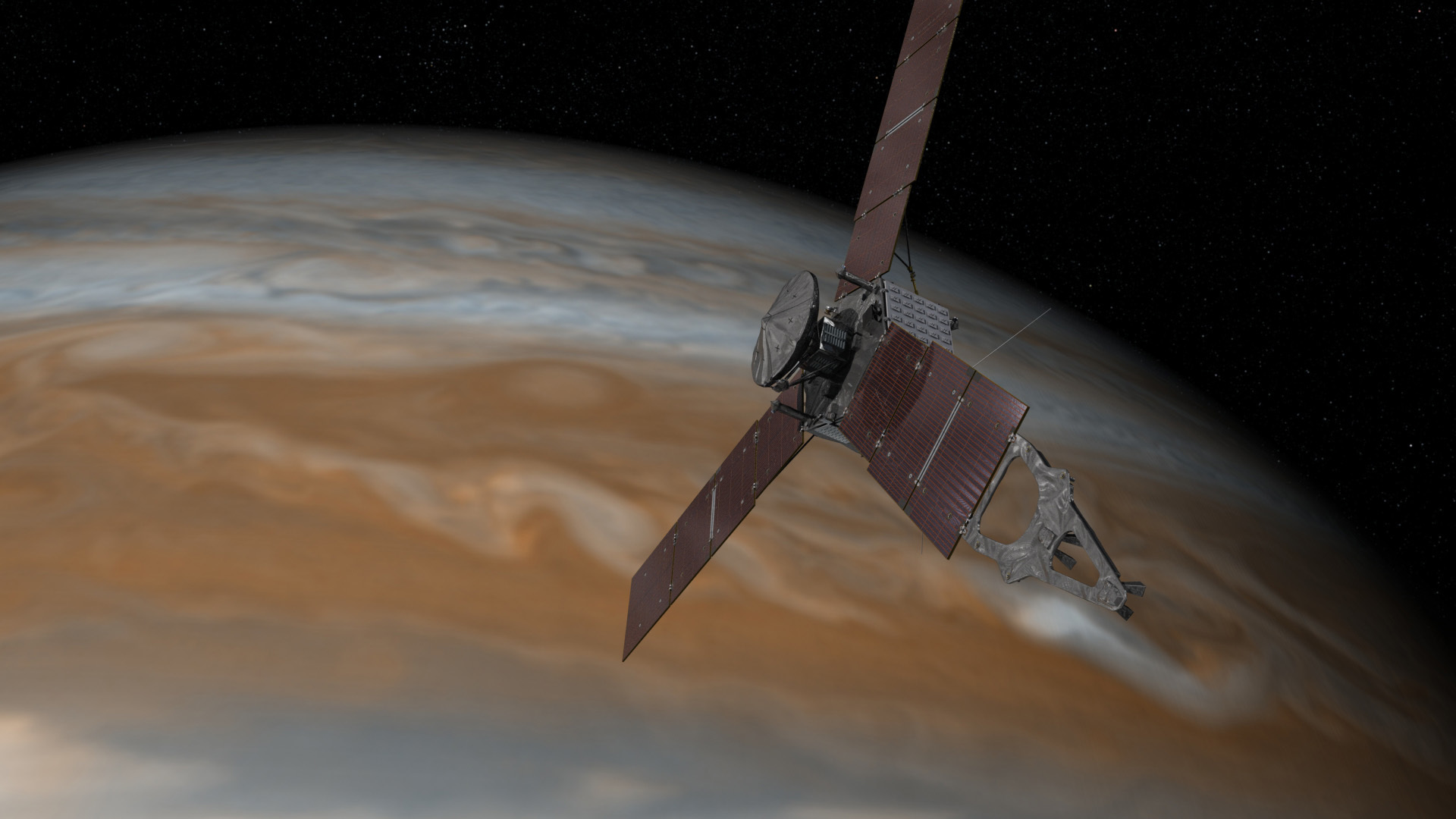Exploring Jupiter's secrets
NASA's Juno spacecraft has entered the orbit of our solar system's largest planet. What do we hope it will find?


Late Monday night, after five years spent traveling 1.7 billion miles through the solar system, NASA's Juno spacecraft entered orbit around Jupiter, opening a whole new world of exploration.
Juno's mission is to answer fundamental questions about Jupiter: How did the planet form, and what does that mean for the formation of Jupiter-like exoplanets in other solar systems? Does Jupiter have a core deep within its clouds? What are the internal structures of the clouds, and how do storms like the Great Red Spot form and last for so long? What causes aurora on Jupiter, and why are they so much brighter than anywhere in the rest of the solar system?
Unlike Galileo, the last spacecraft to orbit Jupiter, Juno is essentially going to ignore Callisto, Europa, Ganymede, and Io, the planet's fascinating moons. Instead, all of Juno's instruments will focus on Jupiter alone. The spacecraft will use microwave radio meters to peer into the planet's clouds and probe the planet's internal structure.
The Week
Escape your echo chamber. Get the facts behind the news, plus analysis from multiple perspectives.

Sign up for The Week's Free Newsletters
From our morning news briefing to a weekly Good News Newsletter, get the best of The Week delivered directly to your inbox.
From our morning news briefing to a weekly Good News Newsletter, get the best of The Week delivered directly to your inbox.
The solar-powered Juno is an extraordinary piece of machinery. It's the first solar-powered spacecraft to travel beyond the asteroid belt, the first spacecraft to use 3D printed parts, and the first spacecraft to feature a titanium vault made to protect its delicate control circuits. Putting a vault on a spacecraft might sound like overkill, but it isn't. After all, Jupiter, the largest planet in our solar system, is home to intense electromagnetic radiation that could easily damage all the electronics Juno has on board. The spacecraft is in a polar orbit — another first — so that it can dodge the worst of the radiation, but it can't skirt past everything. That's where the vault comes into play. Juno's most delicate equipment, including control circuits, are protected by a quarter inch of titanium.
Juno is also the first spacecraft to carry an instrument intended primarily for public outreach and education, where scientific research is a secondary bonus. JunoCam is an optical light camera. Its targets will be decided by a public vote, and the images released for amateur image processing. JunoCam's composure and life expectancy gives some idea of just how harsh Jupiter's environment really is: The camera has a 2 megapixel sensor, the same kind used by the Curiosity rover on Mars. But for Juno, the sensor has to be protected by 1.5 pounds of tungsten-copper shielding and 14 radiation-hardened filters. Even so, mission designers don't expect the camera to last very long. They're predicting JunoCam will survive just eight of Juno's roughly 40 predicted orbits before shutting down due to damage.
Currently, all of Juno's science instruments are turned off so the spacecraft could focus entirely on its tricky capture maneuver as it approached Jupiter. The instruments will turn on approximately 50 hours into orbit. The initial power-up is a systems check, seeing how the instruments function in the new environment and ensuring they made it through the risky capture intact.
But the real science starts on October 14, when the main engines fire up again. Juno will tighten up from a 53.5-day orbit to a 14-day orbit and data collection will peak every other Wednesday to match the spacecraft's closest approach over Jupiter's pole, when it will start snapping photographs and measuring field strength.
A free daily email with the biggest news stories of the day – and the best features from TheWeek.com
Jupiter's intense radiation means that, even with a careful orbit and levels of protection, Juno has a limited lifespan. It is only expected to travel 560 million miles around Jupiter before succumbing to severe radiation exposure. To ensure the spacecraft doesn't crash into one of the planet's moons, which are designated as 'biologically interesting' — places where we might one day find alien life, NASA will deliberately fire Juno's main engines one more time in February of 2018.
So even when crippled and dying, Juno will have one last trick: a fiery death-dive into the swirling gases of Jupiter.
Mika McKinnon is a freelance science writer. She's a master of disaster, a scifi science consultant, and an irrepressible educator. Her writing has appeared in io9, New Scientist, Physics Today, and other outlets. Follow her latest adventures at @mikamckinnon.
-
 7 bars with comforting cocktails and great hospitality
7 bars with comforting cocktails and great hospitalitythe week recommends Winter is a fine time for going out and drinking up
-
 7 recipes that meet you wherever you are during winter
7 recipes that meet you wherever you are during winterthe week recommends Low-key January and decadent holiday eating are all accounted for
-
 Nine best TV shows of the year
Nine best TV shows of the yearThe Week Recommends From Adolescence to Amandaland
